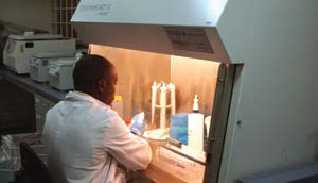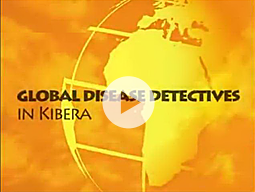Global Disease Detection Program: Kenya
Watch Related Videos
The U.S. Centers for Disease Control and Prevention (CDC) has been a trusted partner in Kenya since 1979, helping address public health challenges ranging from malaria to HIV/AIDS. In 2004, at the invitation of the Kenyan government, CDC established a Global Disease Detection (GDD) Regional Center in coordination with the World Health Organization (WHO) to develop greater country and regional ability to combat endemic diseases as well as new and changing pathogens.
The GDD Center in Kenya is headquartered at the Kenya Medical Research Institute (KEMRI) in Nairobi, with a field presence in Kisumu. Primary partners include KEMRI, the Ministry of Public Health and Sanitation, the Ministry of Medical Service, WHO, the Joint United Nations Program on HIV/AIDS, and other multilateral organizations, nongovernmental institutions, and multiple U.S. government agencies.
Responding to Health Threats
Together with Kenya’s Ministry of Public Health and Sanitation, Ministry of Medical Services, WHO, and other partners, the Center assists the country and the region in detecting and responding to serious outbreaks of cholera, Ebola, drug-resistant tuberculosis, influenza, Rift Valley fever, and typhoid. Environmental conditions have contributed to additional health threats, including a severe outbreak of aflatoxin from contaminated corn, an important source of food.

A laboratory scientist performs a diagnostic test in the Global Disease Detection Regional Center in Kenya’s BSL-3 laboratory. The cause of the majority of outbreaks the Center responds to are confirmed through analysis at this laboratory.
Building Disease Detection and Response Capacity
Using the International Health Regulations (2005) as an organizing framework, the Center is helping Africa develop its own sustainable systems and capable workforce – relying on local rather than remote resources to develop expertise in:
- Emerging infectious disease detection and response
- Field epidemiology and laboratory training
- Pandemic influenza preparedness and response
- Laboratory systems and biosafety
- Zoonotic disease investigation and control
- Health communication and information technology
Connecting Resources
The Center’s activities and resources connect to WHO country and regional offices and Integrated Disease Surveillance and Response countries. As a result, surveillance and laboratory capabilities are connected throughout Africa.
The Center coordinates strategies and technical expertise with a broad range of partners all contributing to improve public health throughout Africa. For instance, the Center connects vital resources contributed through the U.S. Department of State and other global partners to build the region’s laboratory capacity through enhancing biosafety/biosecurity, disease detection and control, and engagement with scientists and public health leaders across the region.
Making a Regional Impact

CDC helped respond within 48 hours to an Ebola hemorrhagic fever outbreak in Bundibugyo District, Uganda, that was caused by a new type of Ebola virus.
From 2006-2015, the Center in Kenya has supported:
- Effective response to over 300 outbreaks in 12 countries
- Ongoing disease surveillance at all provincial hospitals in Kenya for select conditions and diseases reportable within days – and sometimes hours – of the occurrence
- Detection of 20 pathogens, including one new to the world, Nodavirus
- Establishment of laboratory diagnostic testing capacity for 67 pathogens
- Graduation of over 100 future global health leaders from four countries as part of the two-year Field Epidemiology and Laboratory Training Program
- Participation of over 13,000 public health officials from 20 countries in short-term public health exercises, including infection control, epidemiology, laboratory, pandemic preparedness, and rapid response
- Page last reviewed: April 4, 2016
- Page last updated: April 4, 2016
- Content source:


 ShareCompartir
ShareCompartir
